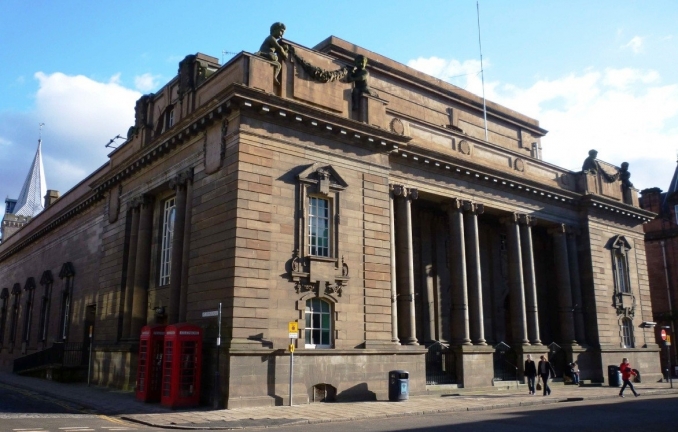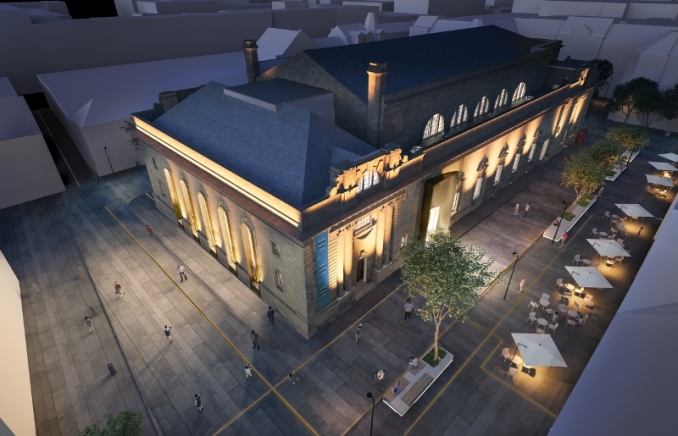Perth City Hall to be new heritage centre that could house Scotland's Stone of Destiny
Perth City Hall in the Scottish city of Perth (Scottish Gaelic: Peairt) is now to be converted into a new heritage and arts attraction. The B-listed building, constructed in 1911, had lain empty for 14 years. It had been under threat of demolition for some time. An outcome which according to campaigners would have been an ‘act of civic vandalism’. Now funding has been secured to turn Perth City Hall into a major new museum attraction. Architect Mecanoo have been identified as the preferred designer for the redevelopment. Perth and Kinross Council website report that: 'Perth City Hall will be a major new venue, displaying our own museum collections alongside iconic loans from elsewhere and touring exhibitions...' They go on to say: 'It will also provide spaces for learning and community events and be a fantastic meeting point at the very heart of Perth. Transforming the building into a modern cultural attraction will allow the Council to deliver on one of the themes of the Smart growth for Perth City for Perth City to grow the visitor economy of Perth.'
A possible centrepiece for the museum has been suggested as the Stone of Destiny, although no agreement has yet been reached on this. The Stone of Destiny also known as the Stone of Scone is at present located in the Crown Room of Edinburgh Castle, along with the crown jewels of Scotland (the Honours of Scotland). The Stone of Scone was used for centuries in the coronation of monarchs in Scotland. It was historically kept at the now-ruined Scone Abbey in Scone (Scottish Gaelic:Sgàin), near Perth. There are a number of theories as to the origin of the Stone of Scone.
One such story concerns Fergus Mór mac Eirc (Scottish Gaelic: Fergus Mòr Mac Earca) who was the first King of the Scots in Scotland and brought the Stone from Ireland and was crowned on it. He was King of the Dál Riata a Scots and Pictish overkingdom which encompassed parts of western Scotland and northeastern Ulster in Ireland. Erc, his father was king of Irish Dál Riata until 474. The Stone of Destiny was used in the coronation of Scottish kings for hundreds of years. Then in 1296 Edward I of England stole the stone from Scone, and had it built into his own throne. Since then it has been used in the coronation ceremonies for the monarchs of England and then Great Britain.
As such the stone was held in captive in the foreign capital of London for many years. It was on Christmas Day 1950, that four Scottish students (Ian Hamilton, Gavin Vernon, Kay Matheson, and Alan Stuart) removed the stone from Westminster Abbey in London. It was found three months later on April 11, 1951 at Arbroath Abbey in the Scottish town of Arbroath (Scottish Gaelic: Obar Bhrothaig). It was sent to Westminster Abbey some months later. The stone was eventually returned to Scotland and arrived at Edinburgh Castle on St Andrew’s Day 30th November 1996, where it remains. A replica of the Stone of Scone stands upon Moot Hill in the grounds of Scone Palace.







